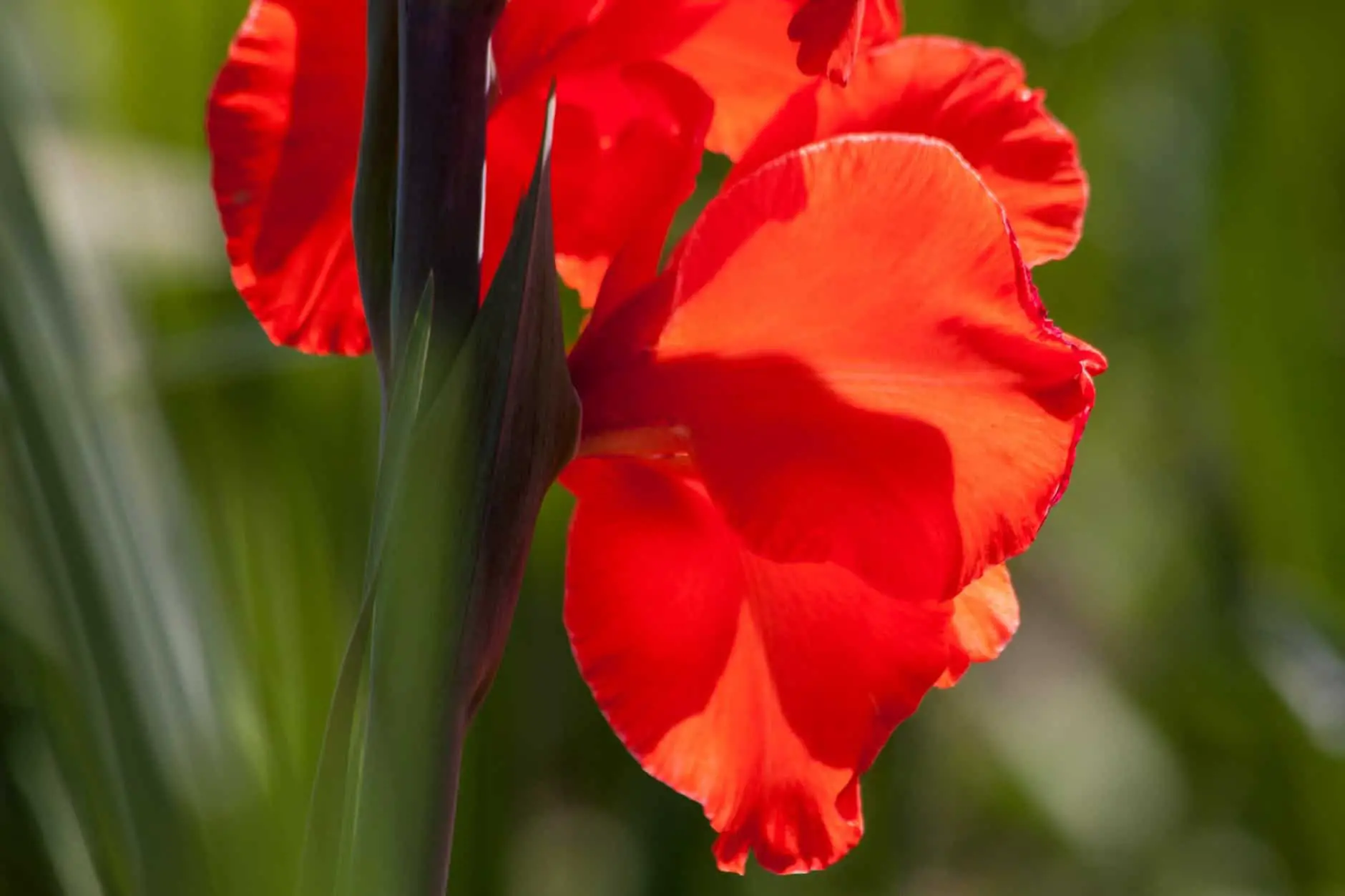

When talking about the cormophytesRight from the start, you may not know well what type of plants we are referring to. But believe me, in this group are one of the genres that most frequently beautify gardens and terraces.
The flowers they produce are so elegant and beautifully colored, it’s hard not to stop and look at them. What’s more, many of them give off a very pleasant aroma.
What is it?


The term cormophyte has two meanings. The first is the following: it is a perennial plant, that is, it lives more than two years, has a corm, and loses its aerial part (leaves, stems) during winter. A corm is an underground stem, which has a swollen base and also has certain protrusions from which the buds arise, and hence the leaves and flowers. It is composed of dry leaves that protect the interior.
It has several similarities to bulbs; in fact, cormophytic plants are usually included within the bulbous group, and are usually cultivated in the same way. However, despite the fact that both stems accumulate nutritive substances and have more or less the same shape, if we cross-cut a corm we would not see concentric rings as easily as it would happen if we cut a bulb.
The second meaning is simpler: is a plant that has roots, stems and leaves, and conducting vessels of sap in all its parts. These are the most common, and the most abundant as well. This includes all spermatophyte plants (those that produce seeds), and pteridophytes (which are ferns).
Its origin dates back to more than 300 million years ago. Before them, the few plants that existed were only found in the oceans, since it is known that it was there that life originated. The transition from an aquatic environment to a terrestrial one was a huge change, since in order to survive they had to learn to take advantage of the sunlight while avoiding the loss of water.
And how did they do it? Well, adapting the structure of the leaves. Specifically, modifying the epidermis, which has one or more layers of cells that make up the cuticle. This is a coating that makes the sheet waterproof. Also, thanks to it, the water inside is prevented from being lost.
What are the parts of a cormophyte vegetable?
This type of plants consist of roots, stems and leaves. But, although each of the parts is well differentiated, everything arises from the same point. The roots sprout and grow into the earth, and both the leaves and the stem emerge at the top.
6 examples of cormophytes
There are many plants that fall into this group, so many that it would be impossible to name them all in the same article. For this reason, we have selected some to give you an idea of what they are like:
Asplenium


The Asplenium They are ferns native to Australia and Europe that are characterized by presenting a short rhizome from which leaves called fronds sprout. These can be simple and lanceolate, or they can be very divided. Its height varies greatly depending on the species, being able to measure 20 centimeters to almost a meter.
Crocus 

Plants of the genus Crocus they are one of those that present a corm. They are found in Europe, Asia, and North Africa. They do not usually exceed 30 centimeters in heightand its leaves are green and long. The flowers are about 15 centimeters tall, and they bloom in spring.
Dion


Image – Wikimedia / andy_king50
Dioon are plants native to America. They look a lot like Cycas, and in fact belong to the same order (Cycadales), but their bearing and leaves, as well as their inflorescences are somewhat different. They can reach a height of 1-2 meterswith green leaves, pinnate with short pinnae, and leathery.
Helianthus


Those plants that belong to the genus Helianthus are annual or perennial herbaceous that reach a height of between 1 and 5 meters. They develop erect or ascending stems, and their leaves are generally large, measuring up to 12 centimeters, yellow in color.
Pinus


Image – Wikimedia / Katja Schulz
Plants of the genus Pinus they are pines, conifers native to the northern hemisphere that usually grow as trees (rarely as shrubs) that have a pyramidal or rounded crown. The trunk grows somewhat inclined, reaching more than 7 meters in height. They can be found in high altitude forests, but also near the sea, such as the propagating through a pine forest (Pinus halepensis). for example.
Rhopalostylis


Image – Flickr / Katja Schulz
The species of the genus Rhopalostylis are palms native to the South Pacific. They have a thin trunk of about 30 centimeters, and pinnate leaves between 3 and 5 meters in length. They can reach a height of 10-15 meters depending on the variety.
As you can see, there are many cormophytes. The fact that there are so many makes them a very interesting group of plants, since there are many that are ideal to grow anywhere.

